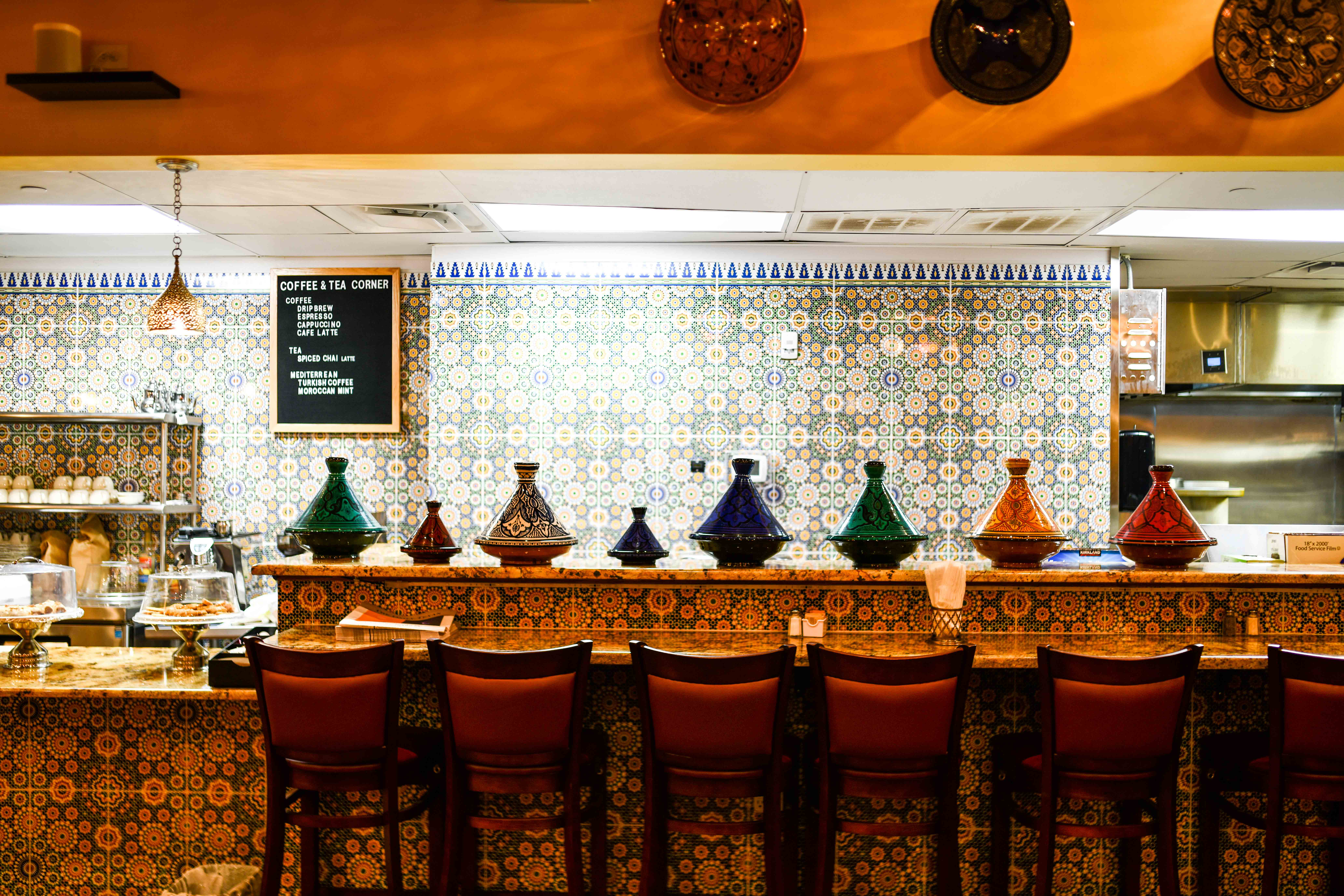Mediterranean Food: A Flavorful Trip Through Custom and Preference
Mediterranean cuisine offers as a remarkable crossway of custom and preference, attracting from a varied selection of societies that extend continents. The extensive tastes and wellness advantages linked with the Mediterranean diet have actually amassed global admiration, yet underneath its surface exists a complicated narrative of historic impacts and local specializeds that warrant further expedition.
Beginnings of Mediterranean Food
The beginnings of Mediterranean food are deeply rooted in an abundant tapestry of background, location, and social exchange. This cooking custom arises from a region defined by its varied landscapes, consisting of coasts, hills, and productive plains, which have influenced its agricultural techniques and food manufacturing. The Mediterranean Container, including nations such as Italy, Greece, Spain, and Turkey, has been a crossroads of worlds for millennia, where profession courses facilitated the exchange of ingredients, strategies, and cooking viewpoints.
Ancient cultures, consisting of the Greeks and Romans, significantly designed Mediterranean foodways, highlighting the significance of fresh, seasonal produce and communal eating. The spread of agriculture, particularly the farming of grapes, grains, and olives, laid the foundation for dishes that continue to be staples today. The influence of various conquerors and investors, such as the Moors and Ottomans, introduced cooking designs and new tastes, even more improving the cuisine.
Today, Mediterranean food is celebrated not just for its flavor and diversity yet also for its focus on healthful consuming, personifying a balanced strategy to nutrition that proceeds to appeal to international tastes buds. This historic interplay of active ingredients and societies develops the essence of what we currently recognize as Mediterranean food.
Key Components and Tastes
Mediterranean food is identified by a lively range of key components and tastes that show the region's agricultural bounty and social heritage. Central to this culinary practice are fresh vegetables, fruits, and herbs, which supply necessary nutrients and vivid tastes. mediterranean restaurant las vegas. Staples such as tomatoes, eggplants, olives, and bell peppers are regularly included, showcasing the region's diverse climate and soil
Olive oil, commonly considered as the backbone of Mediterranean cooking, imparts splendor and deepness to recipes. It is enhanced by a variety of herbs and flavors, consisting of basil, oregano, and garlic, which raise the tastes of meats, fish and shellfish, and grains. Grains, particularly wheat and rice, act as essential parts, with recipes like couscous and pasta being staples across the region.
Furthermore, beans such as chickpeas and lentils not only supply protein however additionally add to the cuisine's robustness. The usage of milk, specifically yogurt and feta cheese, includes creaminess and flavor. Seafood, abundant in seaside locations, attributes prominently, with fresh fish and shellfish providing a taste of the sea. Collectively, these components create a harmonious equilibrium that specifies Mediterranean cuisine.
Regional Variants and Specialties
Varied regional variations and specializeds identify Mediterranean food, reflecting the distinct social influences, geography, and background of each area. In the seaside regions of Italy, as an example, seafood preponderates, with recipes like Sicilian caponata showcasing a mix of eggplant, olives, and capers. At the same time, Greece is renowned for its use of feta cheese, olives, and fresh natural herbs, apparent in classic preparations such as moussaka and spanakopita.
The Levantine nations, including Lebanon and Syria, highlight making use of seasonings and grains, with specialties like tabbouleh and kibbeh taking center stage. North Africa, especially Morocco, attracts attention for its fragrant tagines and couscous, typically enriched with dried fruits and an abundant selection of spices.
On the other hand, the Iberian Peninsula highlights making use of cured meats and bold flavors, with Spanish paella and Portuguese bacalhau exemplifying the area's cooking variety.
Each Mediterranean region not only celebrates its regional active ingredients however also shows the historical profession courses and social exchanges that have actually formed its food society, creating a dynamic tapestry of flavors that astounds the taste.
Food Preparation Techniques and Styles
Cooking techniques and designs in Mediterranean food are as varied as the regions themselves, commonly mirroring local traditions and available components. The heart of Mediterranean cooking depends on its simpleness, where fresh fruit and vegetables, herbs, and olive oil take facility phase. Techniques such as barbecuing, toasting, and sautéing are commonly used, permitting the natural flavors of the active ingredients to radiate.
Cooking, common in coastal areas, infuses fish and shellfish and meats with a great smoky richness, while roasting, particularly in the center East, boosts the sweet taste of origin veggies and meats. Sautéing, usually made use of in Spanish and italian meals, supplies a quick method to highlight the richness of garlic and onions, acting as a structure for lots of sauces.
Stewing is another vital strategy, especially in North African cuisines, where tagines simmer fragrant seasonings and tender meats gradually, blending tastes in time - mediterranean restaurant las vegas. Baking, especially in the context of bread and breads, holds a considerable place in Mediterranean society, with each area boasting its own specializeds. more On the whole, these varied cooking techniques not just commemorate the ingredients yet likewise show the deep-rooted cooking heritage of the Mediterranean, making each dish a testament to its abundant history

Health And Wellness Perks of Mediterranean Diet Plan
On a regular basis acknowledged for its various health advantages, the Mediterranean diet plan highlights the consumption of entire, minimally refined foods that advertise general well-being. This nutritional pattern is abundant in fruits, vegetables, whole grains, beans, nuts, and healthy and balanced fats, especially olive oil, while encouraging moderate intake of fish and fowl and limiting red meat and desserts.
Study constantly links this the Mediterranean diet regimen to a range of health benefits. Notably, it has actually been linked with a minimized danger of cardiovascular conditions, greatly due to its focus on heart-healthy fats and antioxidants. The diet regimen is likewise believed to boost cognitive feature and might lower the threat of neurodegenerative illness such as Alzheimer's.
In Addition, the Mediterranean diet regimen supports weight monitoring through its emphasis on nutrient-dense foods that advertise satiety. The high fiber web content from fruits, vegetables, and whole grains help digestion and assists maintain healthy blood sugar level levels.
In enhancement to physical wellness, the Mediterranean diet plan cultivates social well-being, as it motivates public meals and shared cooking experiences. Overall, adopting this diet regimen is not just a path to boosted health and wellness but likewise a party of flavors, culture, and neighborhood.

Final Thought
To conclude, Mediterranean cuisine functions as an abundant tapestry of custom and taste, showcasing varied regional flavors and active ingredients. The emphasis on fresh fruit and vegetables, olive oil, and aromatic natural herbs not only improves cooking experiences however additionally advertises numerous health and wellness advantages. By accepting classic cooking methods and fostering common dining, this cooking heritage continues to influence and attach individuals throughout cultures, strengthening its condition as a treasured and significant element of international gastronomy.

Cooking strategies and styles in Mediterranean cuisine are as differed as the regions themselves, usually mirroring available active ingredients and regional traditions.In verdict, Mediterranean you could try these out cuisine offers as a rich tapestry of custom and taste, showcasing varied local flavors and active ingredients.
 Barret Oliver Then & Now!
Barret Oliver Then & Now! Judd Nelson Then & Now!
Judd Nelson Then & Now! Michael Jordan Then & Now!
Michael Jordan Then & Now! Elin Nordegren Then & Now!
Elin Nordegren Then & Now! Heather Locklear Then & Now!
Heather Locklear Then & Now!